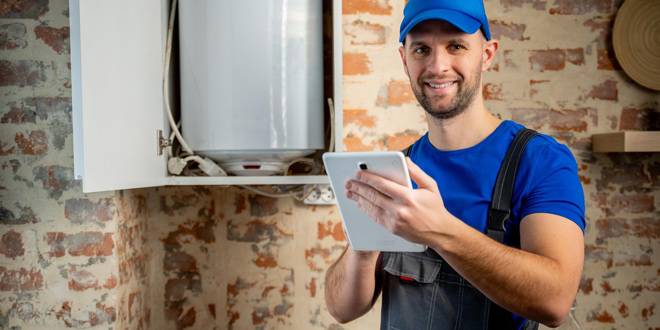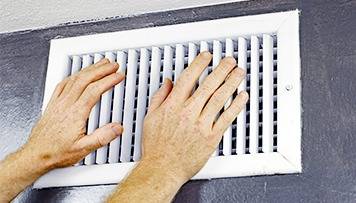
Carbon Dioxide (CO2) levels and other pollutants can significantly affect the air quality within our homes. ⚠️ High levels of CO2 can lead to health issues such as headaches, dizziness, restlessness, difficulty breathing, increased heart rate, and fatigue. Moreover, other indoor air pollutants, including volatile organic compounds (VOCs), particulate matter, and allergens, can exacerbate or lead to chronic health conditions. Recognizing these risks, it’s essential to conduct CO2 and air quality tests to ensure that the air in our homes supports our health rather than undermining it.
Understanding CO2 Levels and Indoor Air Quality 🏠🌬️📊

The Role of CO2 in Indoor Environments
CO2, or carbon dioxide, naturally increases inside homes due to everyday activities like breathing, cooking, and using heating appliances. Elevated carbon dioxide levels can indicate poor ventilation, potentially leading to various health issues such as discomfort, headaches, and fatigue.
Common Indoor Air Pollutants
Our indoor air is also affected by other pollutants that can compromise the quality of the environment we live in. These include volatile organic compounds (VOCs) from paints and cleaning products, particulate matter from cooking and external pollution, and biological contaminants like mold and pet dander. These substances can lead to minor irritations and more serious health conditions.
Importance of Air Quality Tests
Understanding what’s in the air we breathe is crucial for maintaining a healthy indoor environment. Air quality tests are essential tools for assessing CO2 levels and identifying the presence of other harmful pollutants. Regular testing helps inform homeowners about the state of their indoor air, guiding necessary improvements to enhance overall health and comfort.
Our Approach to Air Quality Testing
We utilize advanced equipment to measure CO2 levels and detect a wide range of air pollutants accurately. Our expertise allows us to not only assess your home’s air quality comprehensively but also to recommend effective solutions tailored to your specific needs.
Enhancing Indoor Air Quality
Awareness and proactive measures are key to ensuring that your home remains a safe and comfortable space. Understanding the potential air quality issues and their sources allows for targeted actions to improve the air quality in your home.
5 Signs Your Home Needs a CO2 and Air Quality Test ⚠️5️⃣🏠

Determining the right time to conduct a CO2 and air quality test in your home is crucial for ensuring the well-being of everyone inside. Various indicators suggest that your indoor environment may not be as healthy as it should be. Recognizing these signs early can help you address potential issues promptly and maintain a comfortable and safe living space.
1. Experiencing Unexplained Health Symptoms
One of the most telling signs that your home may need an air quality test is if occupants start experiencing unexplained health issues. Symptoms can range from persistent headaches, dizziness, and fatigue to more severe reactions such as increased asthma attacks or chronic respiratory conditions. If these symptoms improve when leaving the house, it’s a strong indicator that your indoor air quality should be evaluated.
2. Noticing Persistent Unpleasant Odors
Stale or musty odors can signal poor air circulation or the presence of mold and mildew within your home. These odors not only affect your comfort but can also indicate high humidity levels or the breakdown of organic materials, both of which can severely impact air quality.
3. Observing Visible Mold Growth or Excessive Dust Accumulation
The presence of visible mold in your home is a clear sign of excessive moisture and poor air quality. Similarly, an unusual accumulation of dust might point to inadequate filtration systems. Both conditions can exacerbate allergies and respiratory issues, emphasizing the need for a thorough air quality test.
4. Undergoing Recent Home Renovations or Introducing New Furnishings
Home improvements and new furnishings can significantly enhance the aesthetics and functionality of your space. However, they can also introduce new sources of volatile organic compounds (VOCs) into your indoor environment. Paints, adhesives, and even new furniture can emit VOCs that degrade air quality. Using an indoor air quality monitor after such changes is essential to ensure that these improvements do not compromise the health of your home’s occupants.
5. Experiencing High Humidity Levels or Condensation
High humidity levels can contribute to a host of air quality issues, including mold growth and an increase in dust mites. If your home frequently feels humid or you notice condensation on windows and other surfaces, it’s a sign that your indoor air might be too moist, and action is required to correct this imbalance.
How to Conduct CO2 and Air Quality Tests 🛠️📈📝

Ensuring the air within your home is safe and healthy involves a proactive approach to testing for CO2 levels and other pollutants. Conducting thorough air quality tests can seem daunting, but understanding the process and your options can make it manageable and straightforward.
Choosing the Right Testing Method
DIY Testing Kits:
For those inclined to take immediate action, DIY air quality testing kits offer a convenient, though basic, way to check for certain pollutants, including CO2, VOCs, and particulate matter. While these kits provide a snapshot of your air quality, they may not capture the full spectrum of pollutants or offer the detailed analysis needed for comprehensive solutions.
Professional Air Quality Assessment:
For a more thorough evaluation, professional air quality testing is recommended. Specialists in HVAC and indoor air quality, like our team at All Seasons Air Conditioning, use advanced diagnostic equipment such as indoor air quality monitors to measure a wide range of pollutants accurately. Our assessments go beyond just identifying problems; we also provide actionable insights and solutions tailored to your specific situation.
Key Steps in Professional Air Quality Testing
1. Initial Consultation:
- Understanding your concerns and any symptoms experienced by occupants.
- Reviewing the history of your home, including any recent renovations or known issues.
2. On-site Evaluation:
- Conducting a visual inspection of your home, focusing on areas of concern.
- Using specialized equipment to measure CO2 levels, humidity, VOC concentrations, and particulate matter.
3. Analysis and Recommendations:
- Interpreting the data to identify sources of air quality issues.
- Providing a detailed report with findings and recommended actions, such as improving ventilation, addressing sources of pollutants, or suggesting HVAC system upgrades or maintenance.
Improving Indoor Air Quality
Following testing, the focus shifts to improving your home’s air quality. Solutions may involve simple changes, like increasing natural ventilation or using air purifiers, to more significant interventions, such as HVAC system upgrades or installing air filtration systems. Each recommendation is made with your health, comfort, and budget in mind, ensuring you receive the most effective and practical solutions.
Improving Your Home’s Air Quality: Solutions and Tips 🌬️🔧💡
Once you’ve identified the issues affecting your home’s air quality through carbon dioxide monitors and other air quality tests, the next step is to implement solutions that will create a healthier indoor environment. There are several strategies, ranging from simple behavioral changes to more significant system upgrades, that can significantly improve the air you breathe indoors. Here, we outline practical steps and tips to enhance your home’s air quality.
Enhance Natural Ventilation
- Open windows and doors whenever the weather permits to allow fresh air to circulate and dilute indoor pollutants.
- Use window fans in opposite windows for cross-ventilation, drawing fresh air through the house.
Use Air Purifiers
- Invest in air purifiers with HEPA filters to reduce particulate matter and allergens in specific areas of your home.
- Consider purifiers that also have activated carbon filters to remove gases and odors, particularly if VOCs are a concern.
Maintain Humidity Levels
- Aim to keep indoor humidity between 30% and 50% to inhibit the growth of mold and dust mites.
- Use dehumidifiers in damp areas and exhaust fans in bathrooms and kitchens to control moisture levels.
Regular HVAC System Maintenance
- Replace HVAC filters regularly with high-efficiency filters to trap more pollutants.
- Schedule annual maintenance checks with professionals to ensure your HVAC system is clean and functioning efficiently. We can help ensure your system is optimized for both comfort and air quality.
Reduce Sources of Air Pollution
- Minimize the use of candles, wood fires, and tobacco products indoors to reduce smoke and soot.
- Choose low-VOC or VOC-free paints and cleaning products to decrease the emission of harmful chemicals.
- Be mindful of new furniture or building materials, opting for those that emit fewer pollutants.
Implementing Smart Home Solutions
- Consider upgrading to a smart HVAC system that can monitor air quality and adjust settings automatically for optimal comfort and efficiency.
- Smart ventilation systems can also help by bringing in fresh air when indoor pollution levels rise.
Breathe Better Today
Take the first step towards a healthier home with All Seasons Air Conditioning. 🍃 Our expert team is ready to enhance your indoor air quality, ensuring comfort and well-being for your family. Let’s create a cleaner, safer living environment together. 🏠💨 Contact us now for a consultation and breathe the difference.

